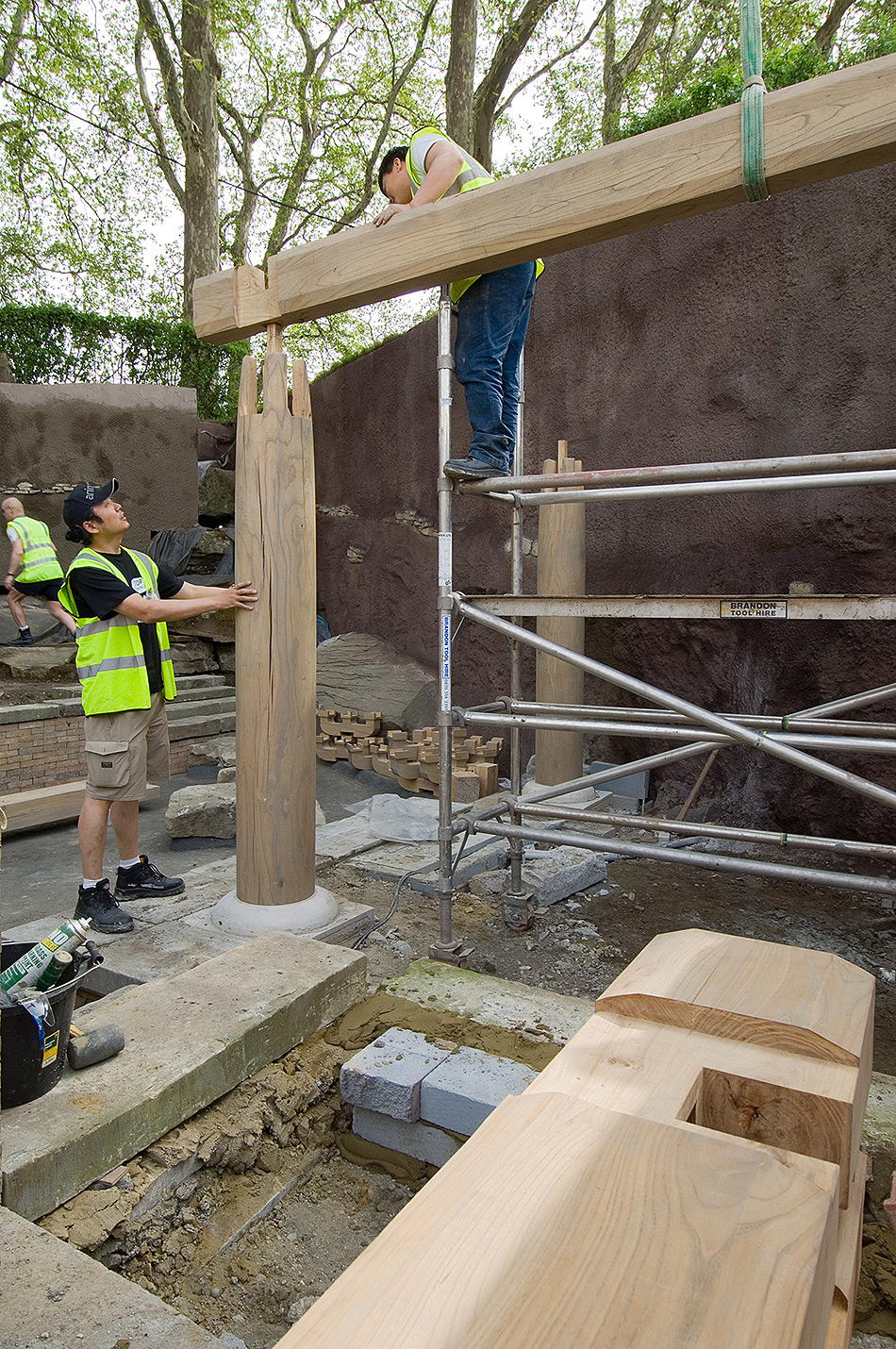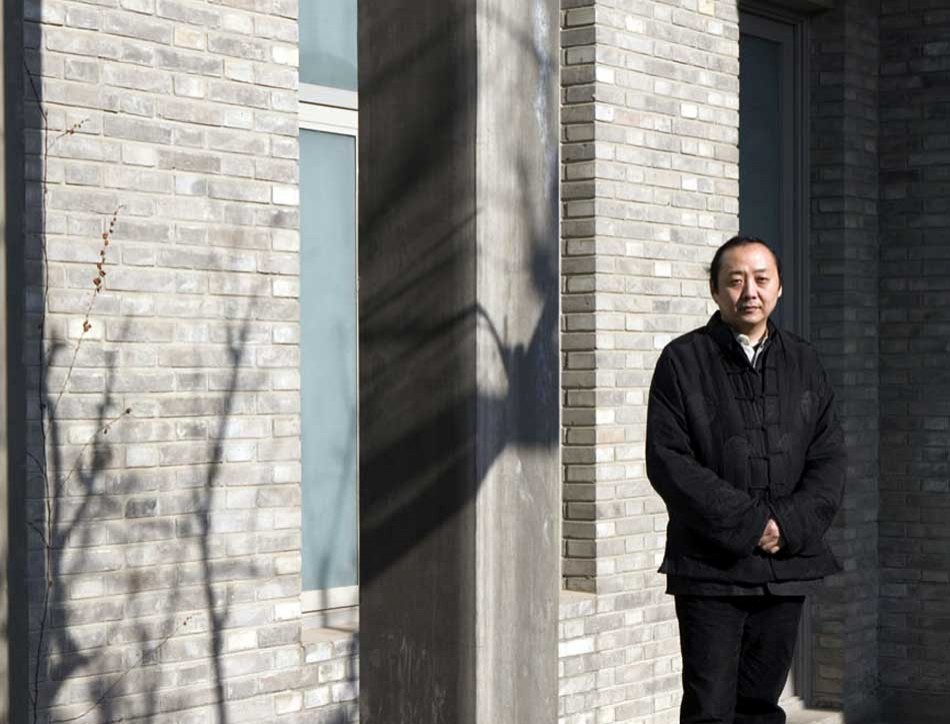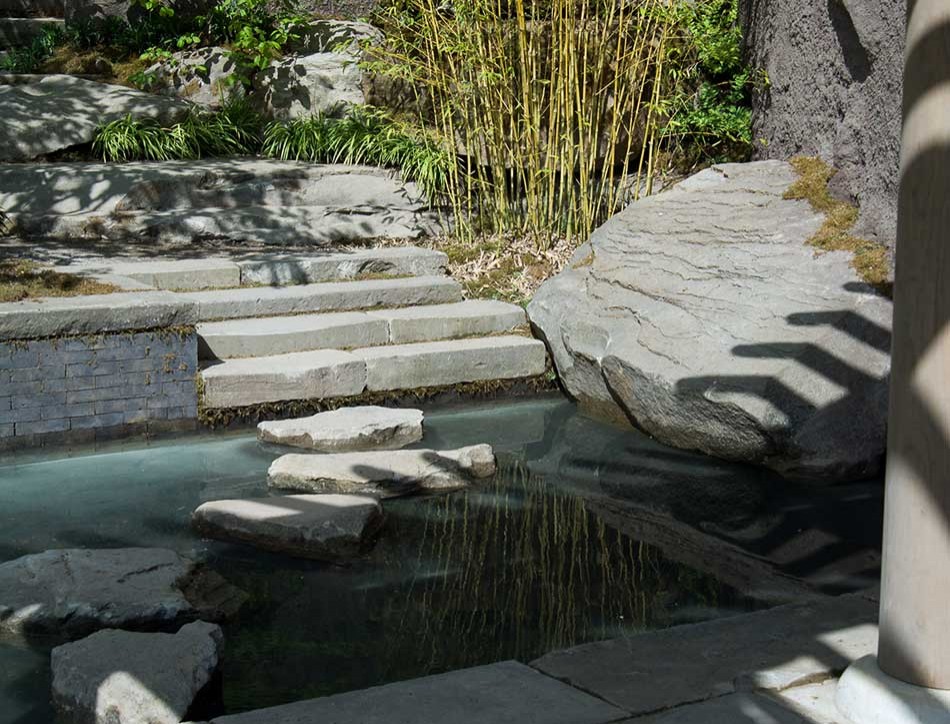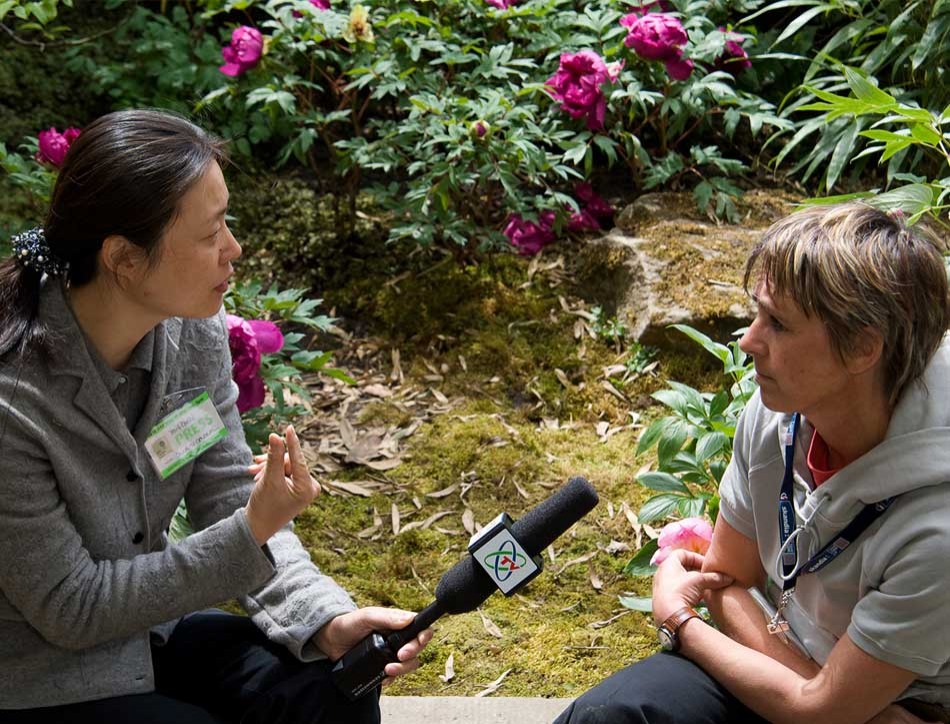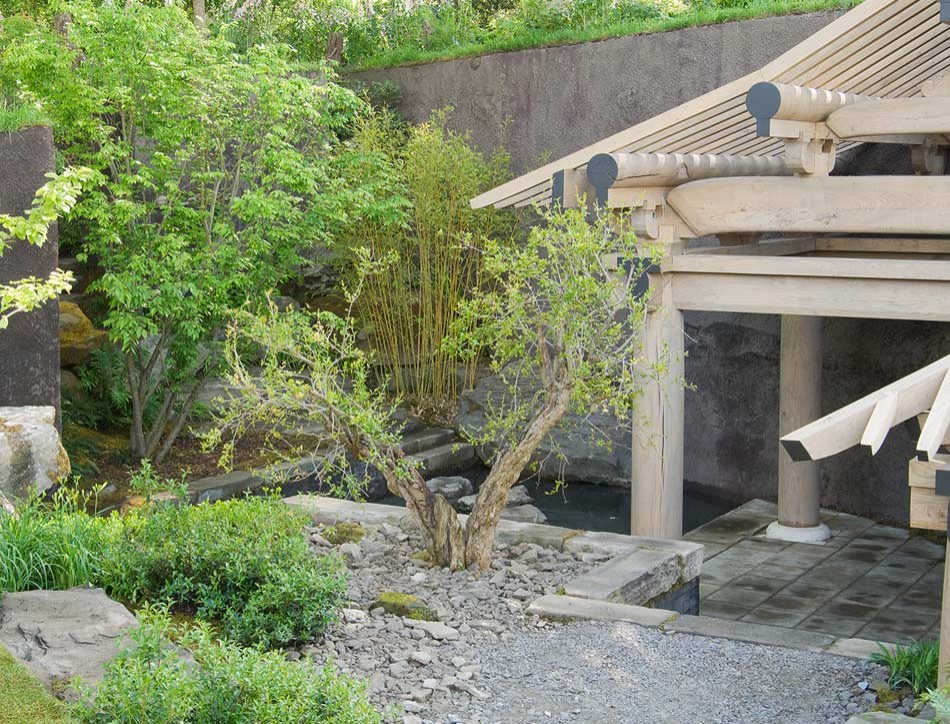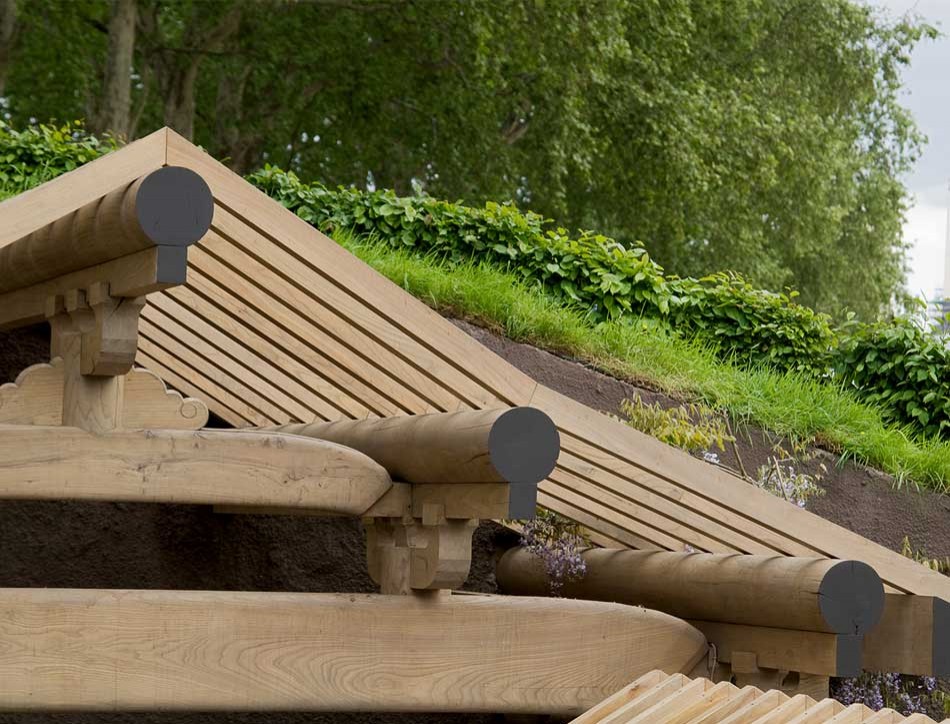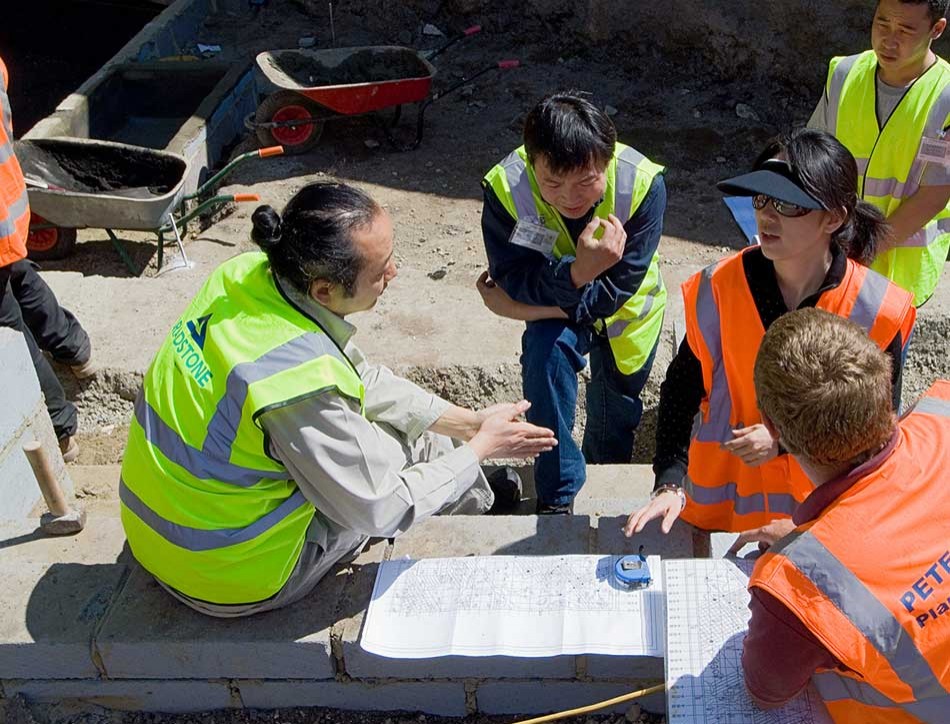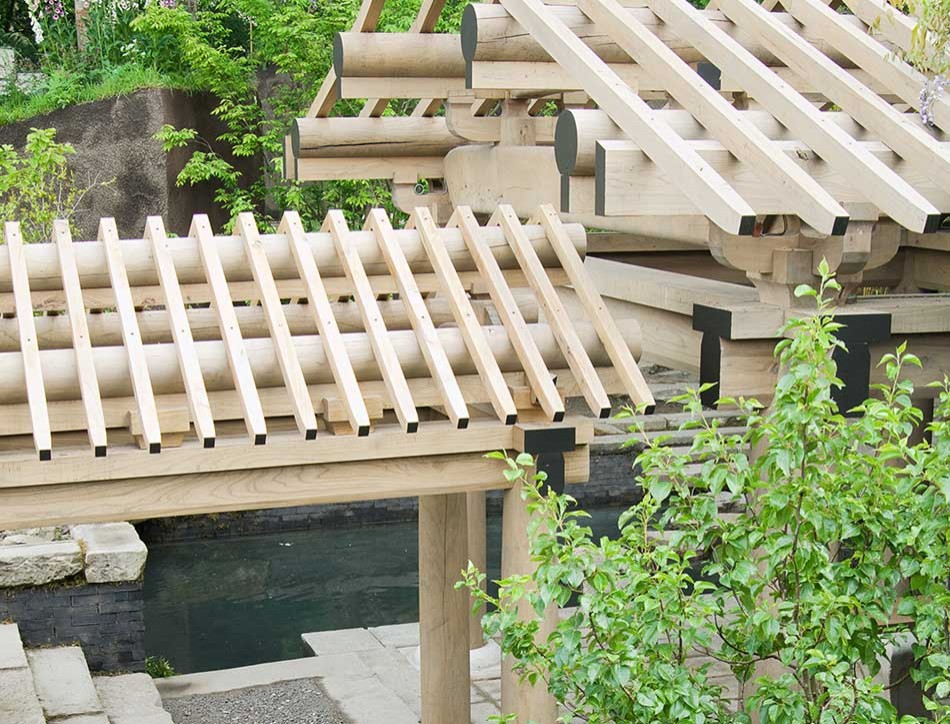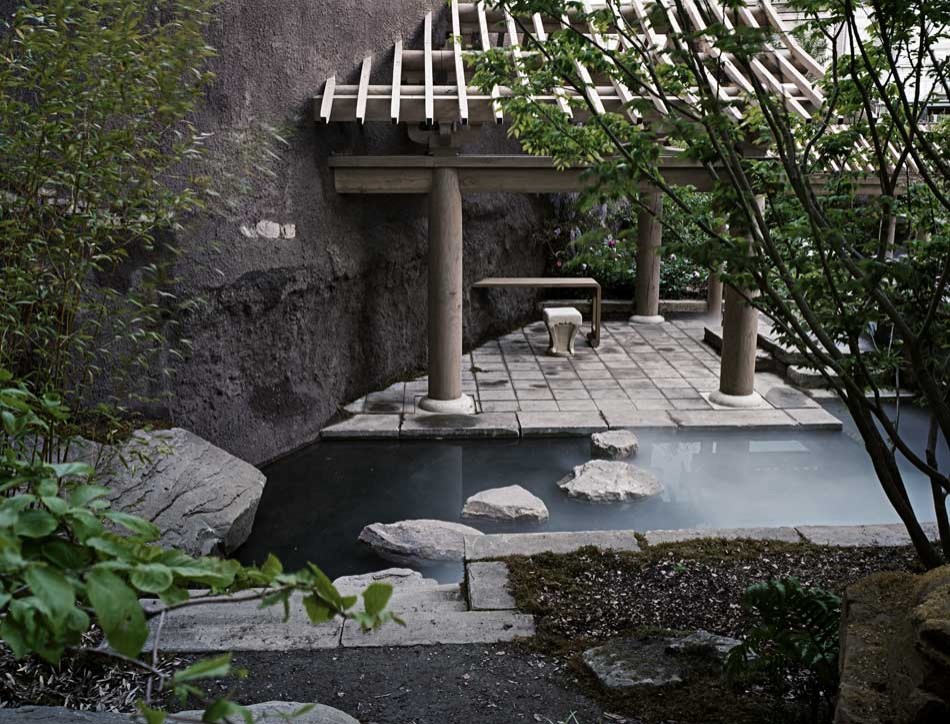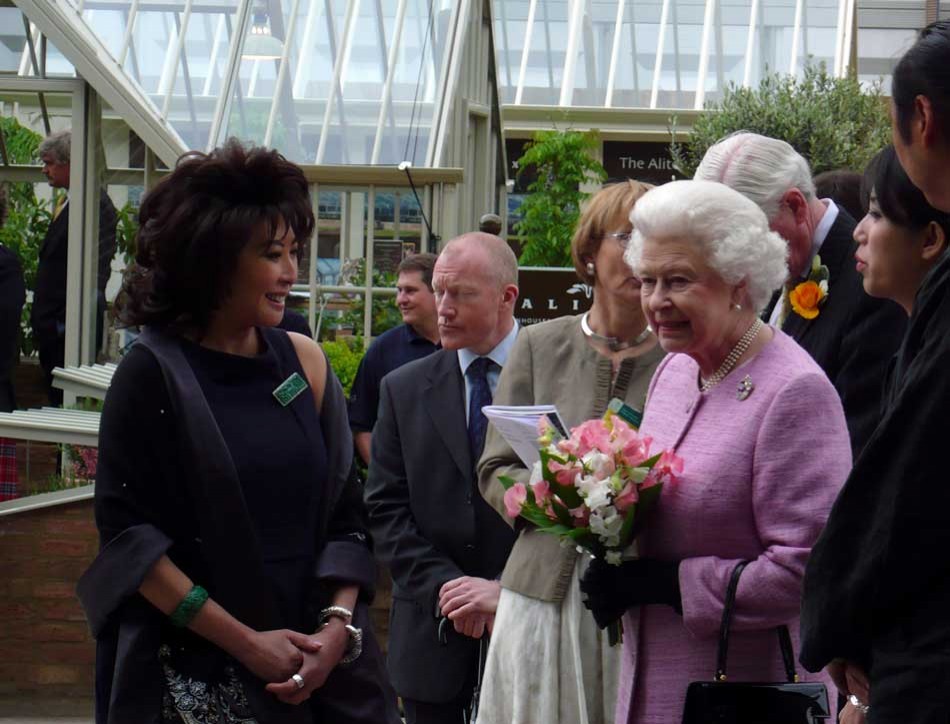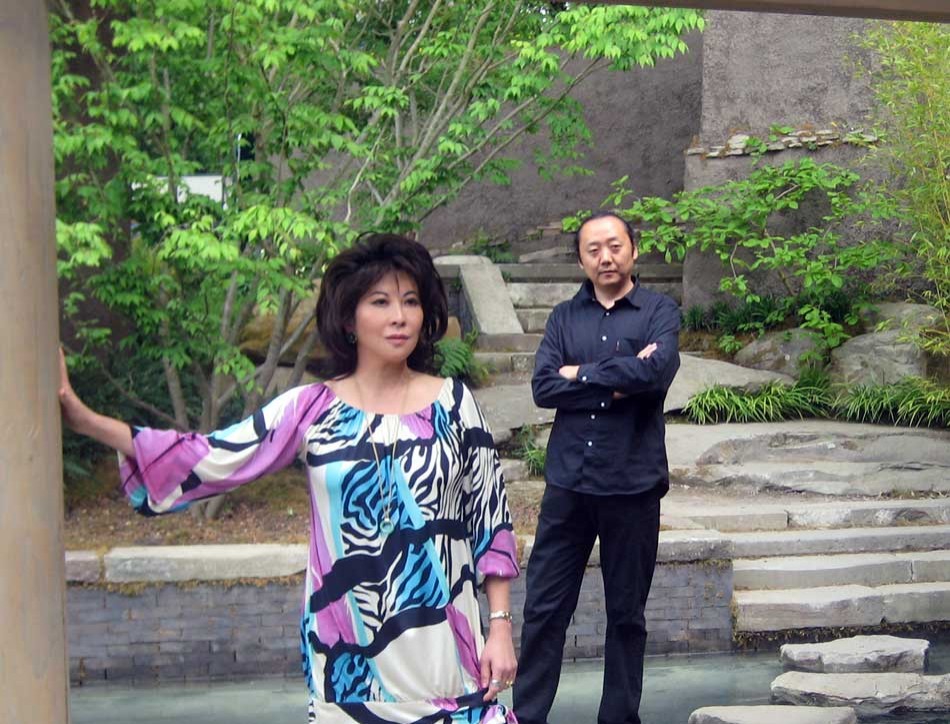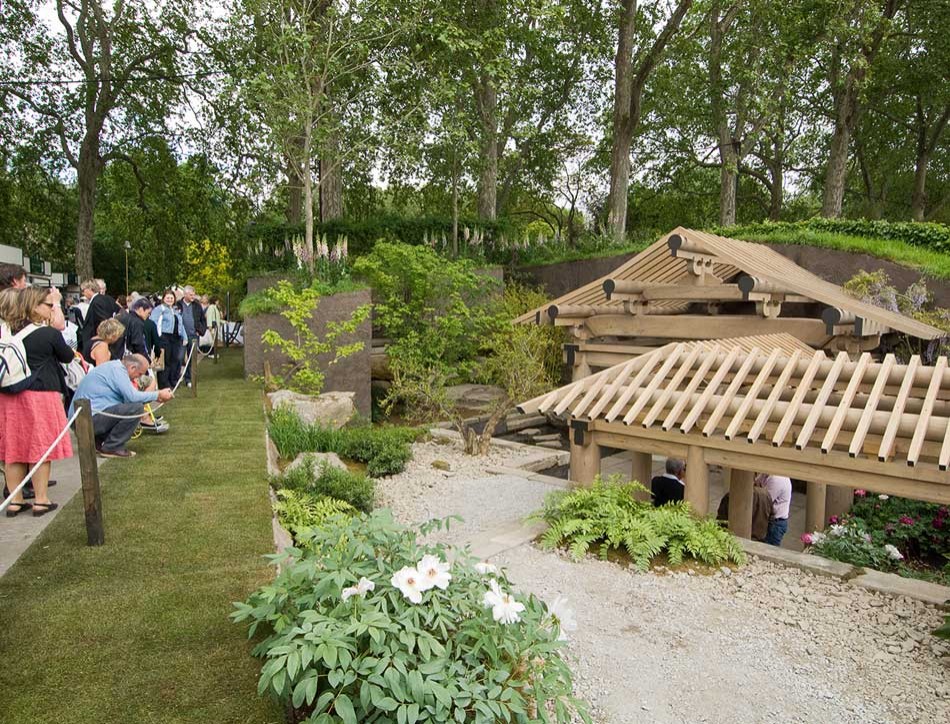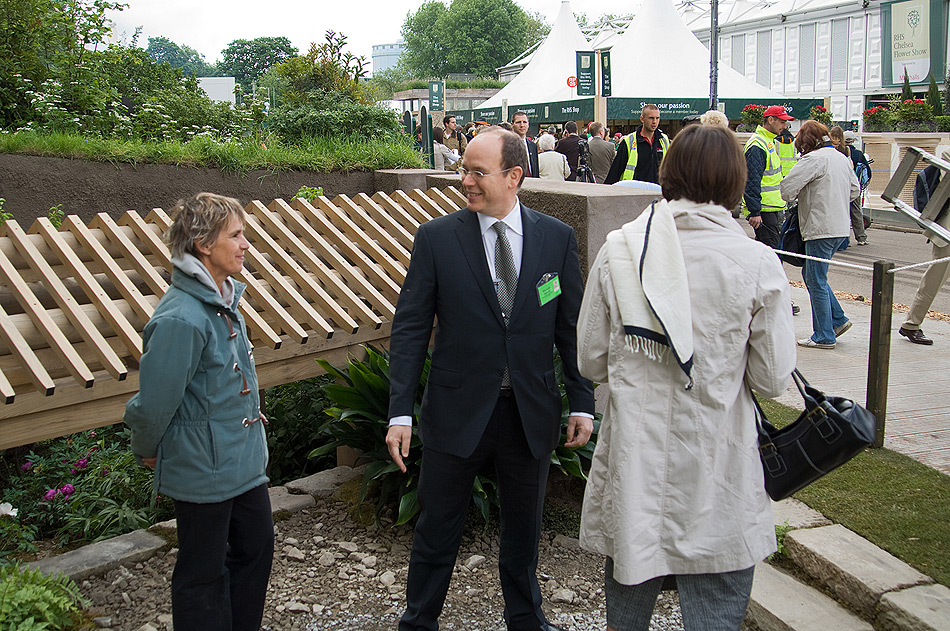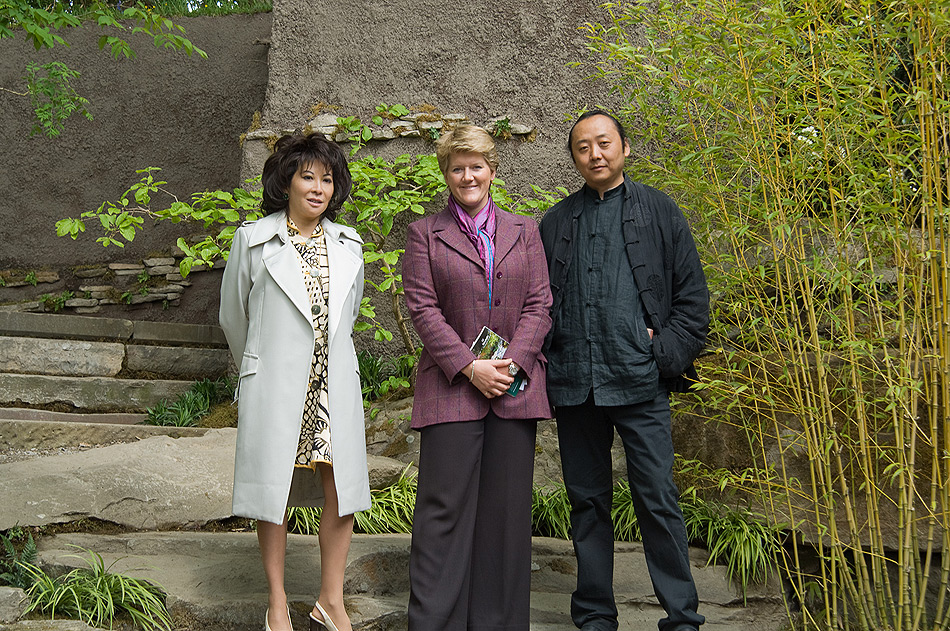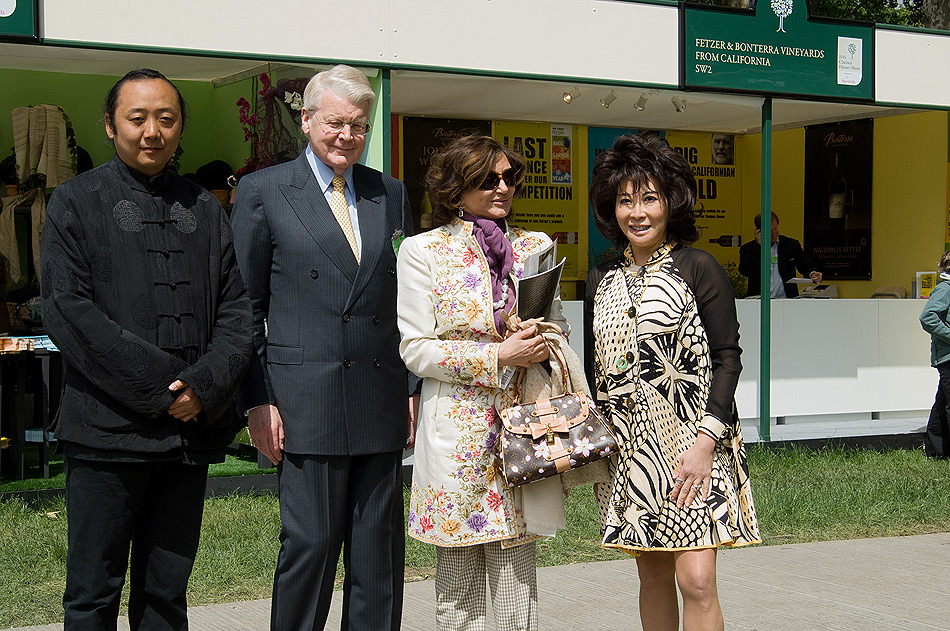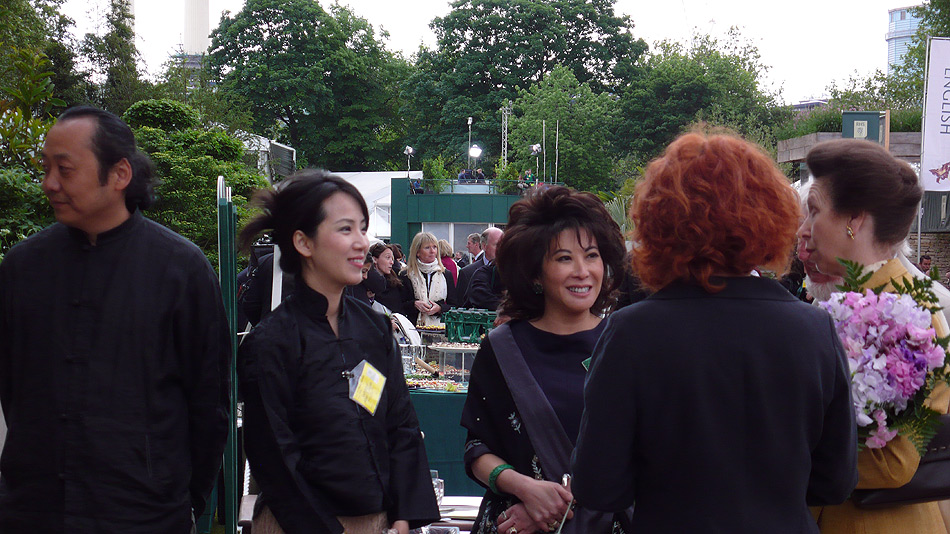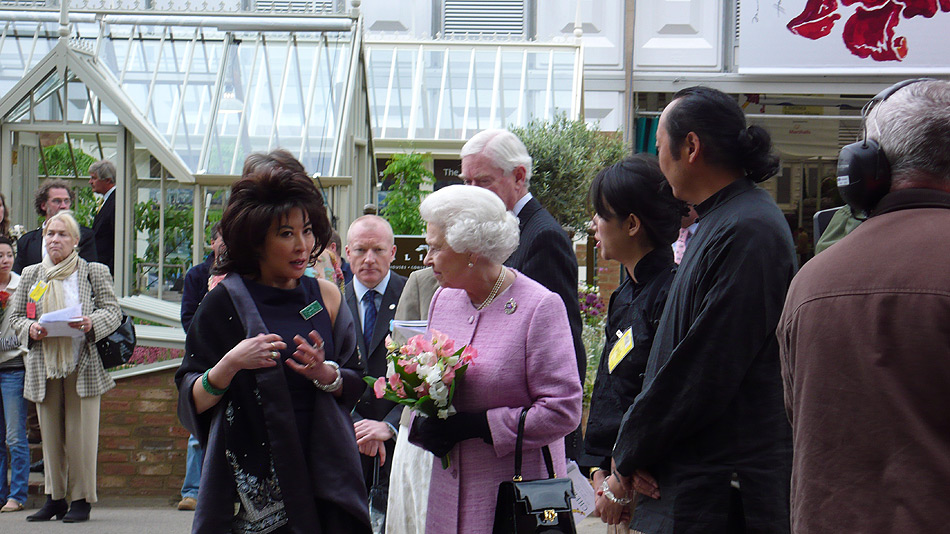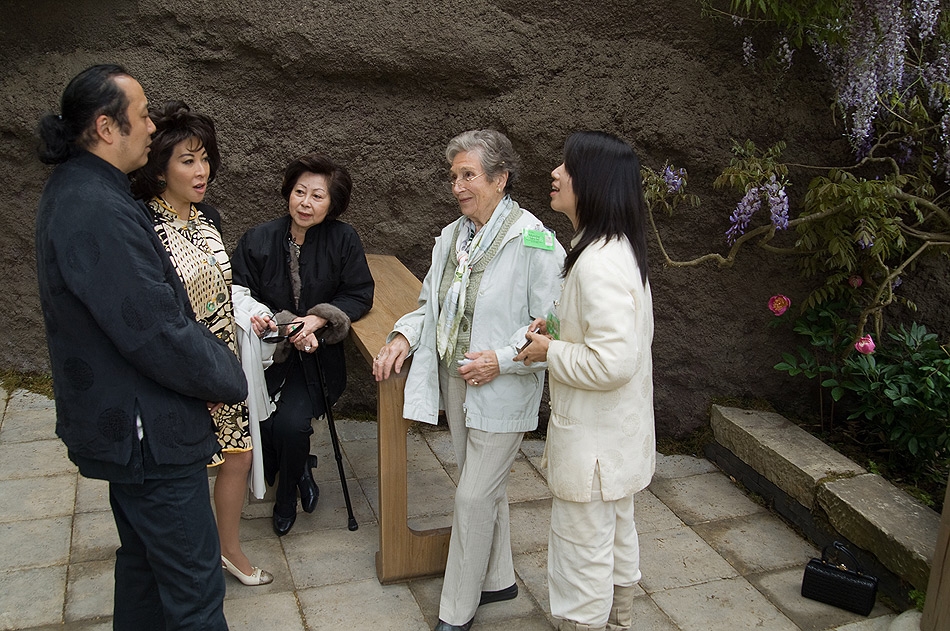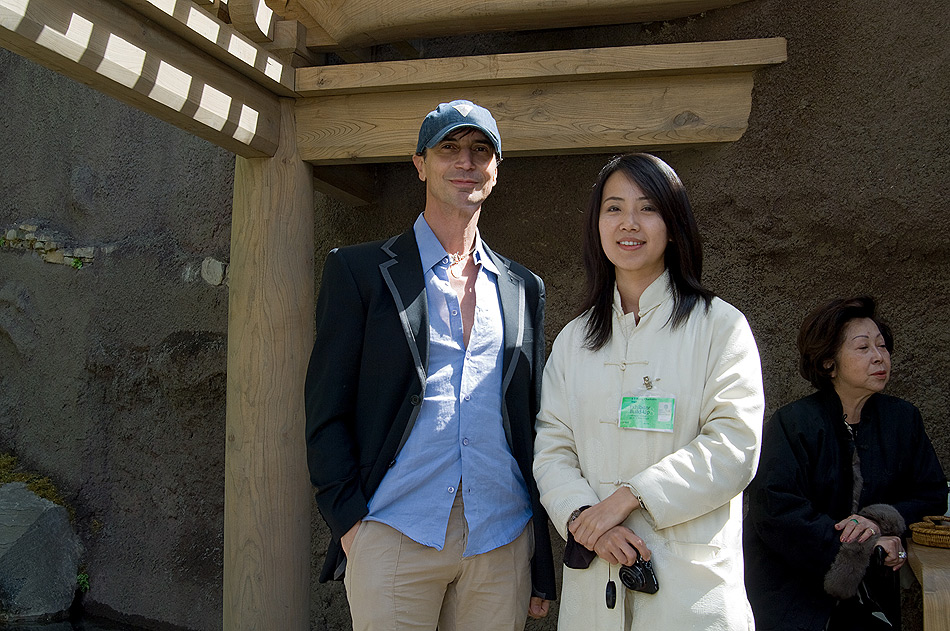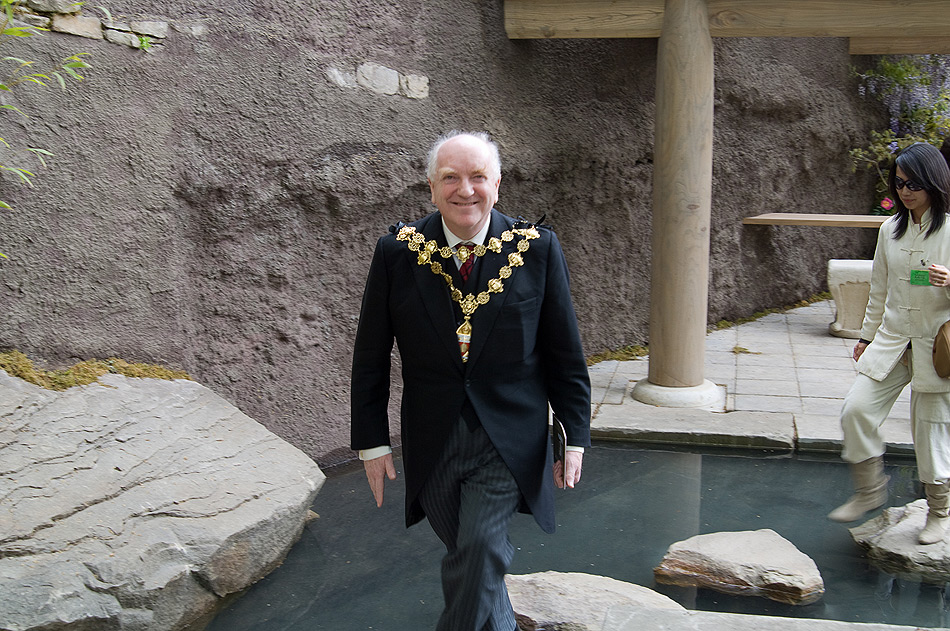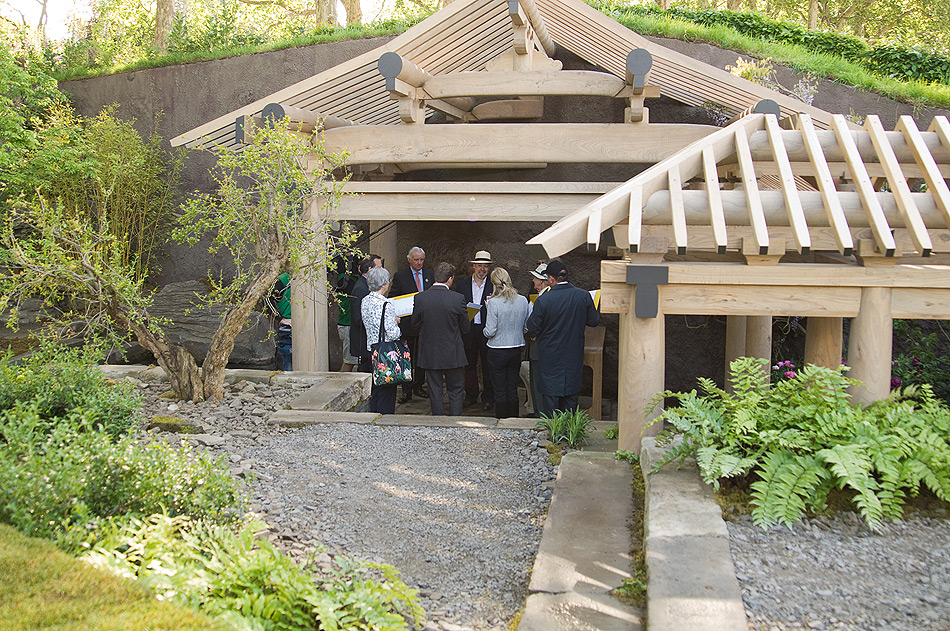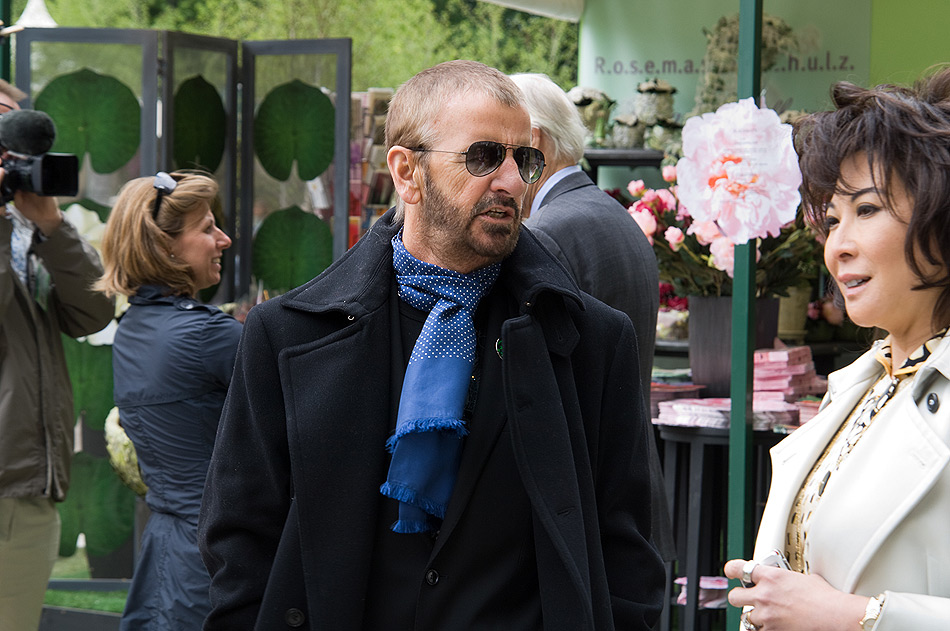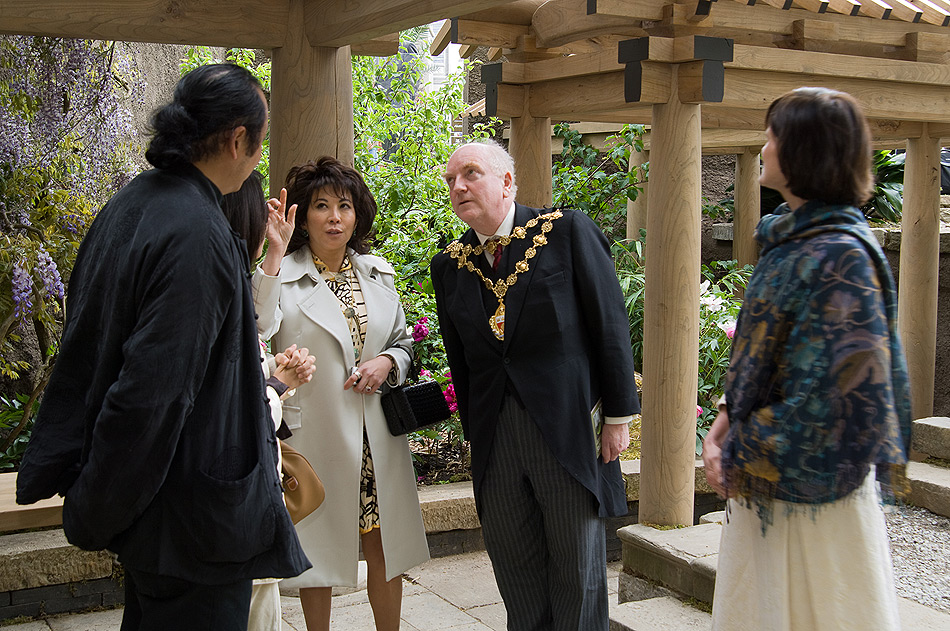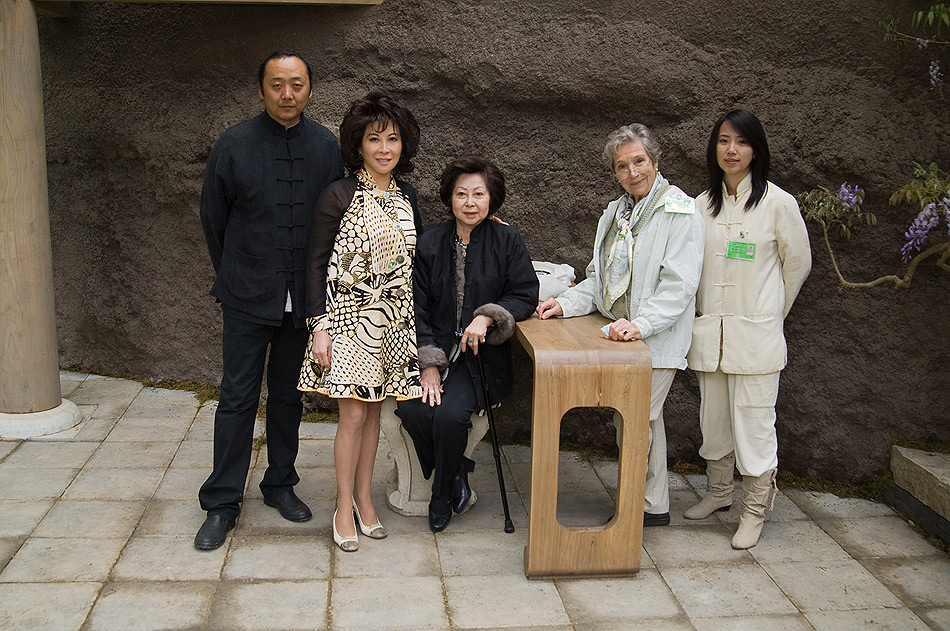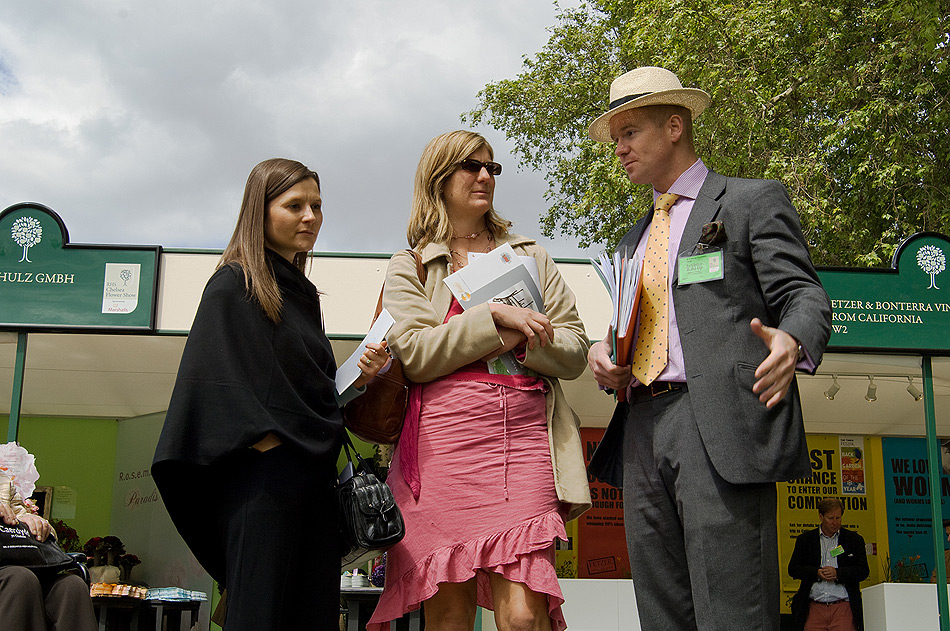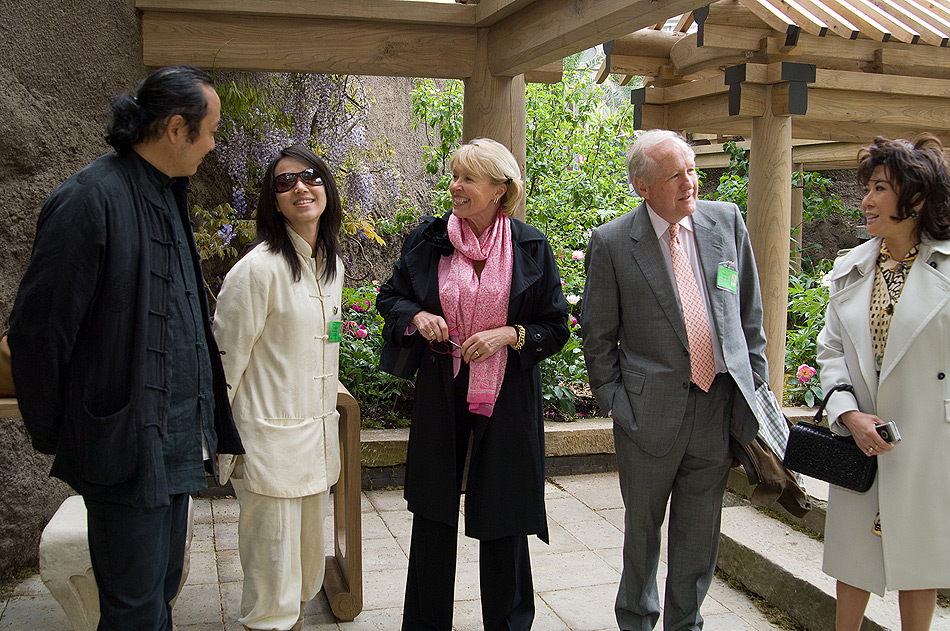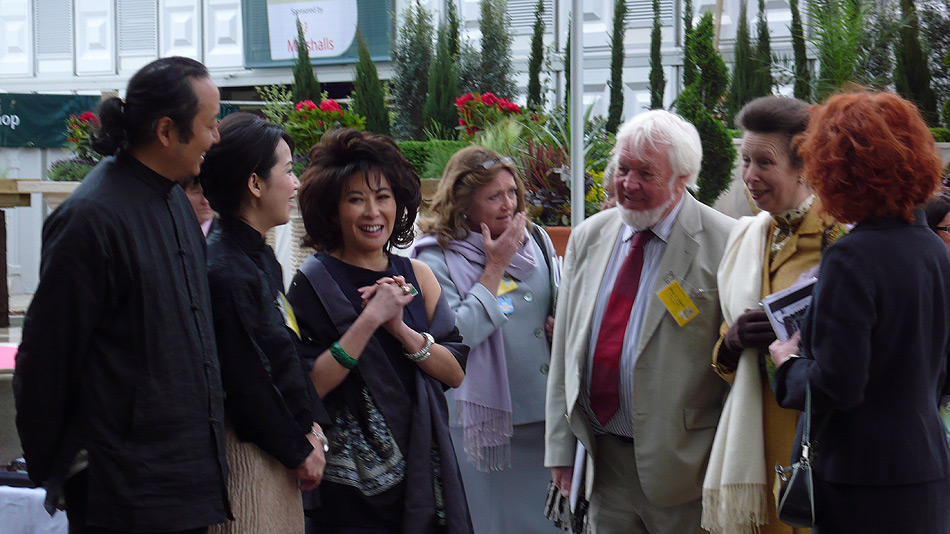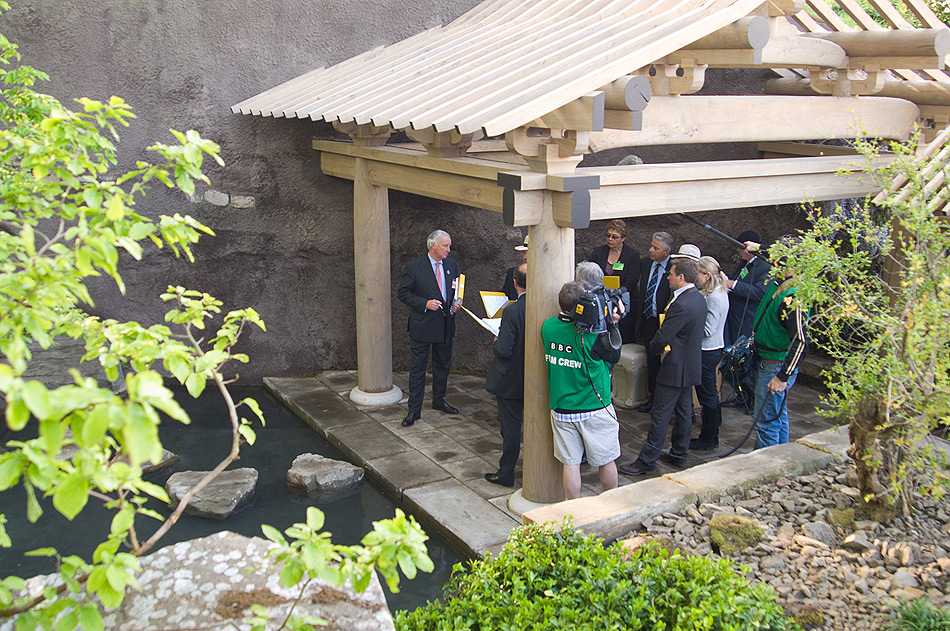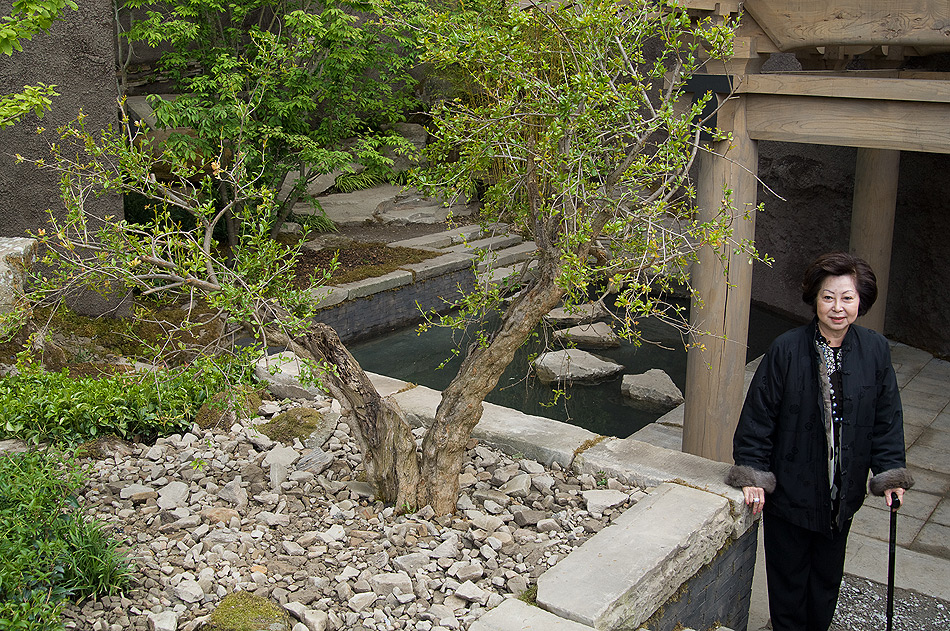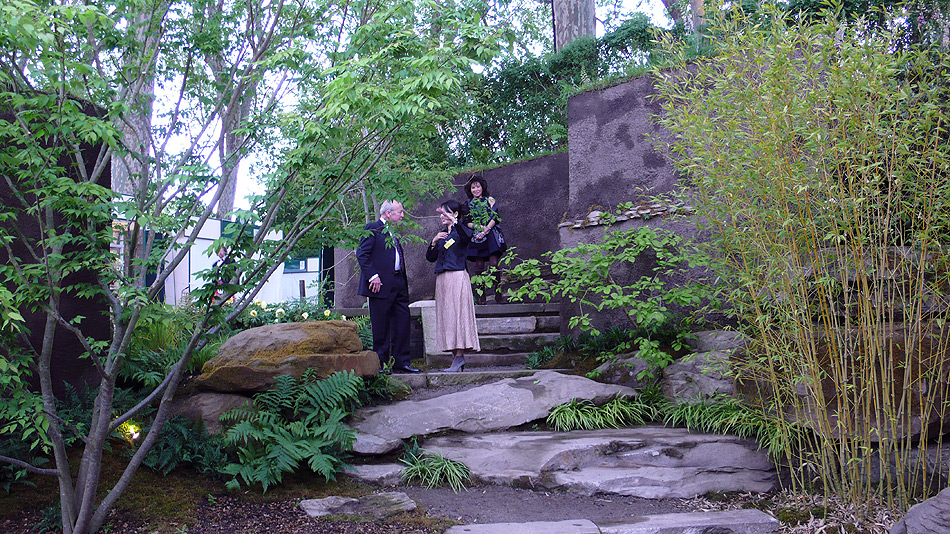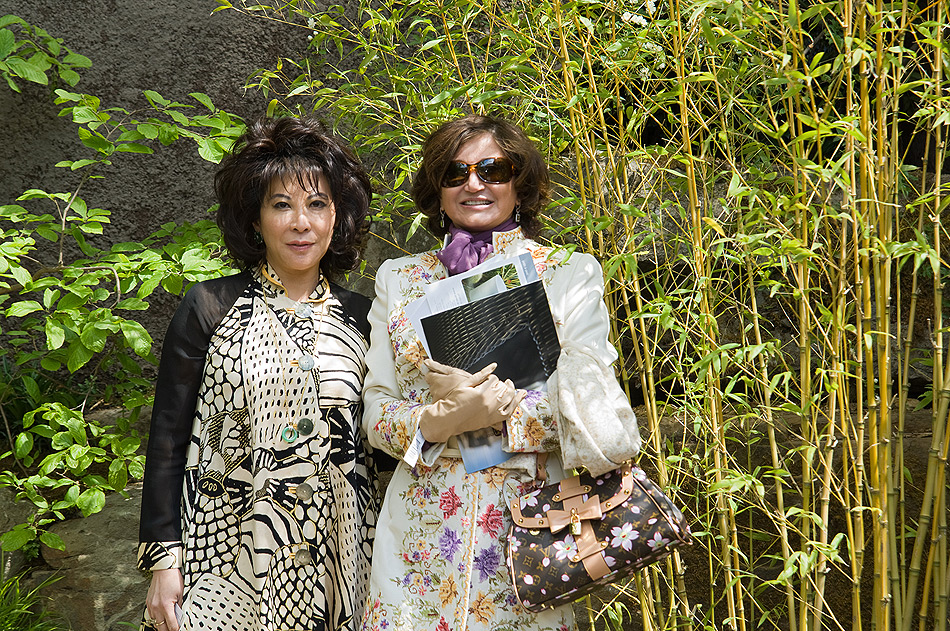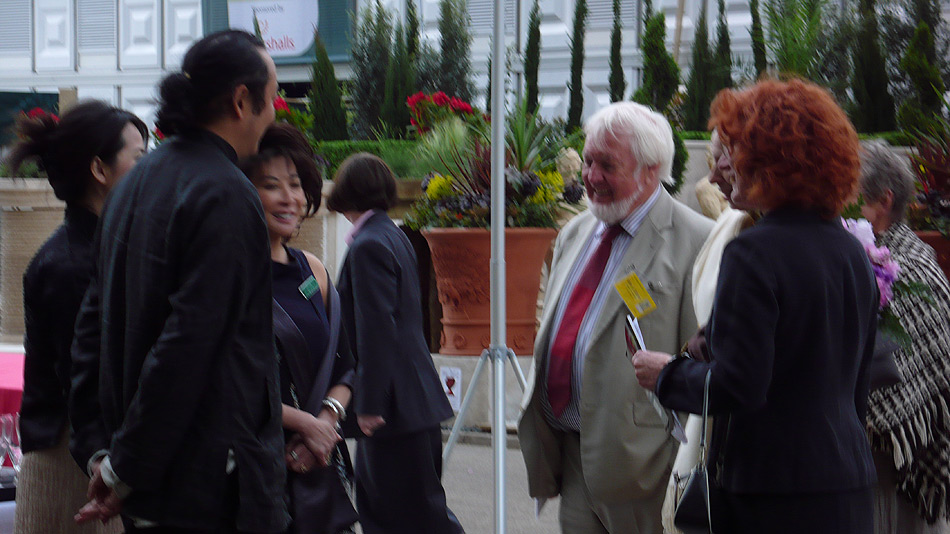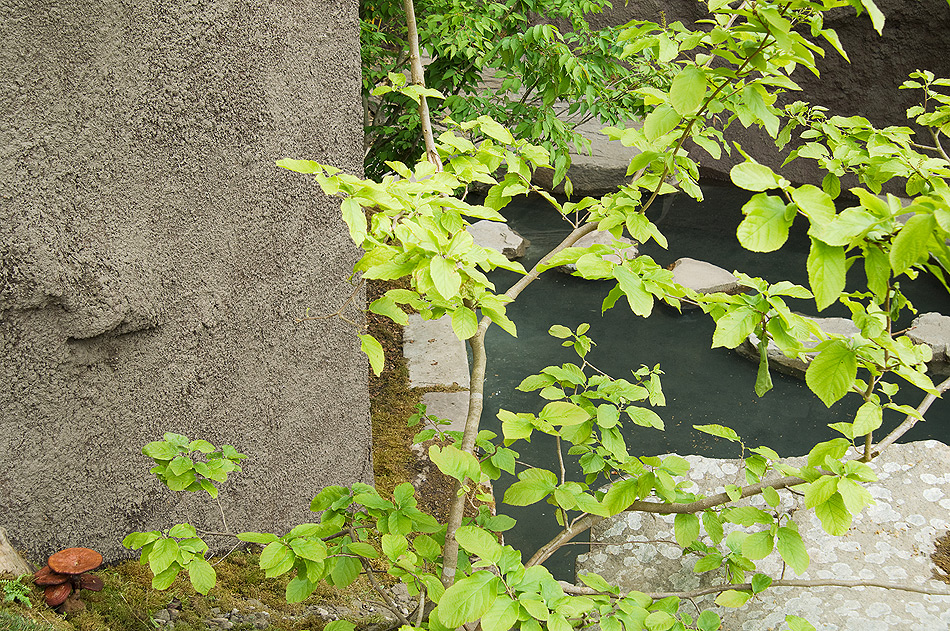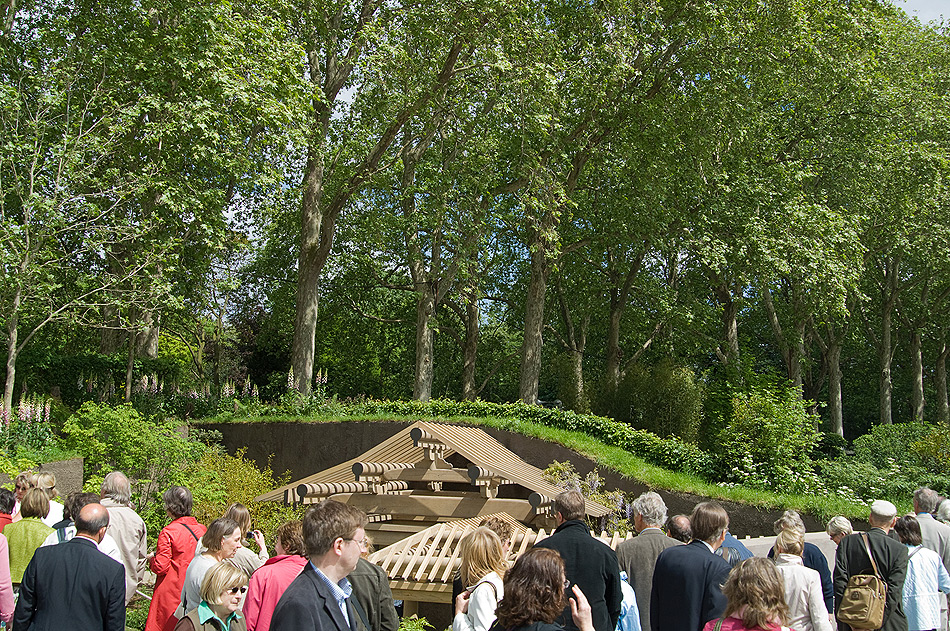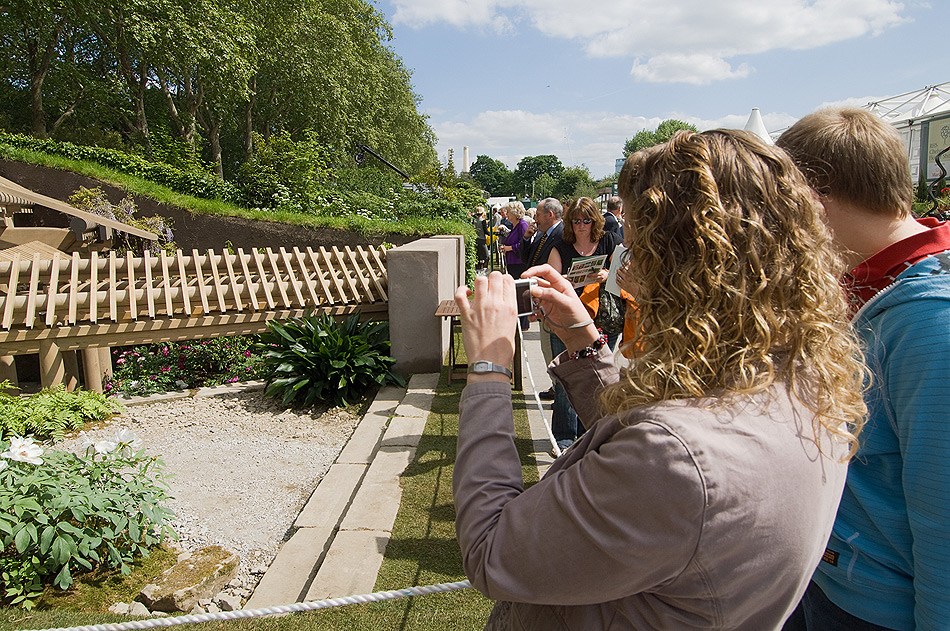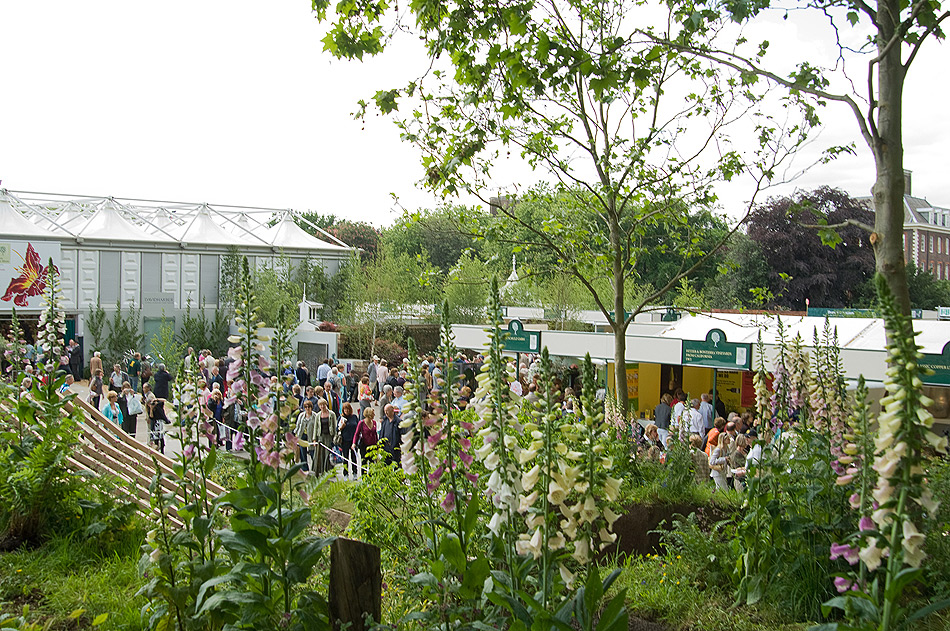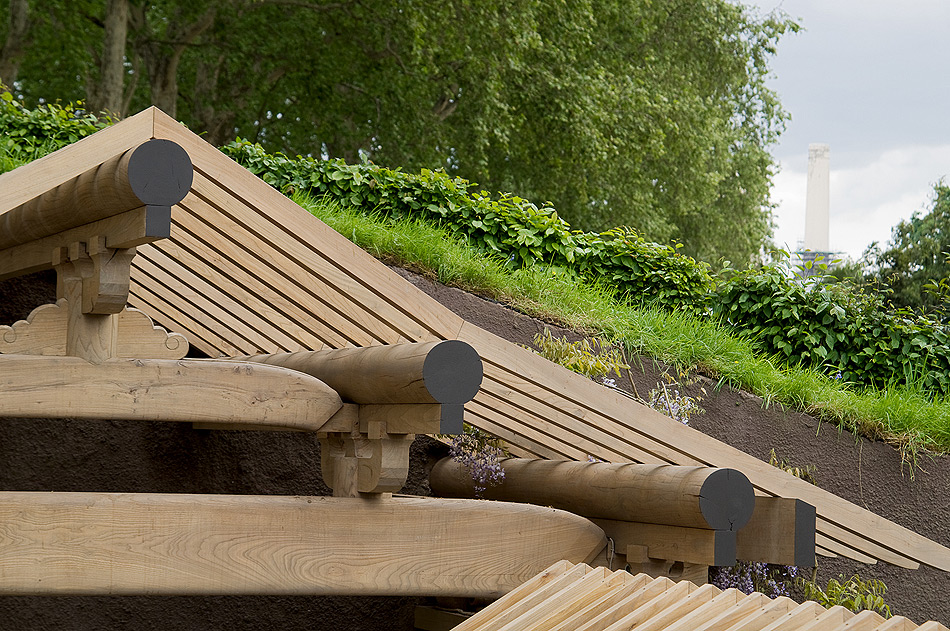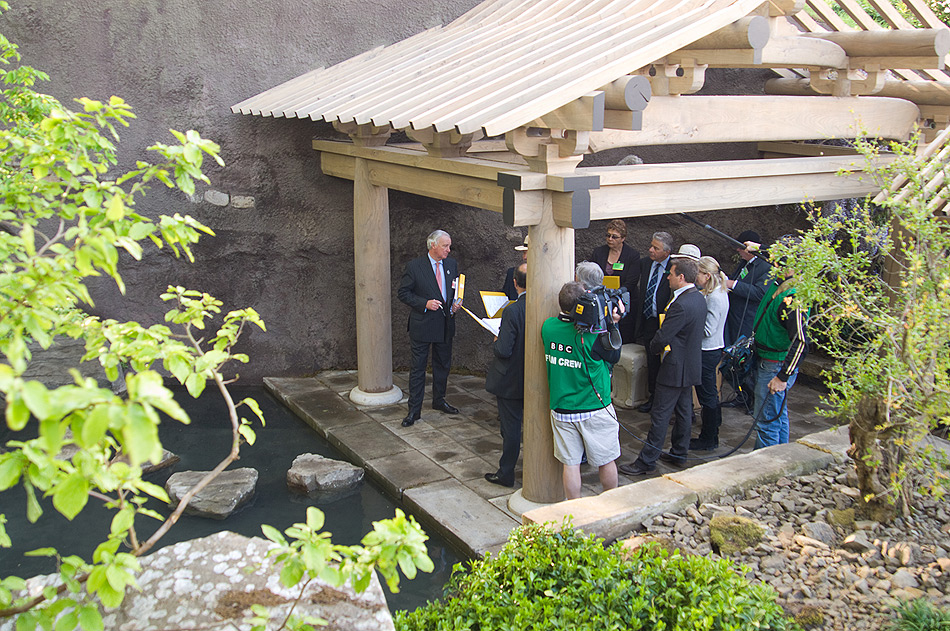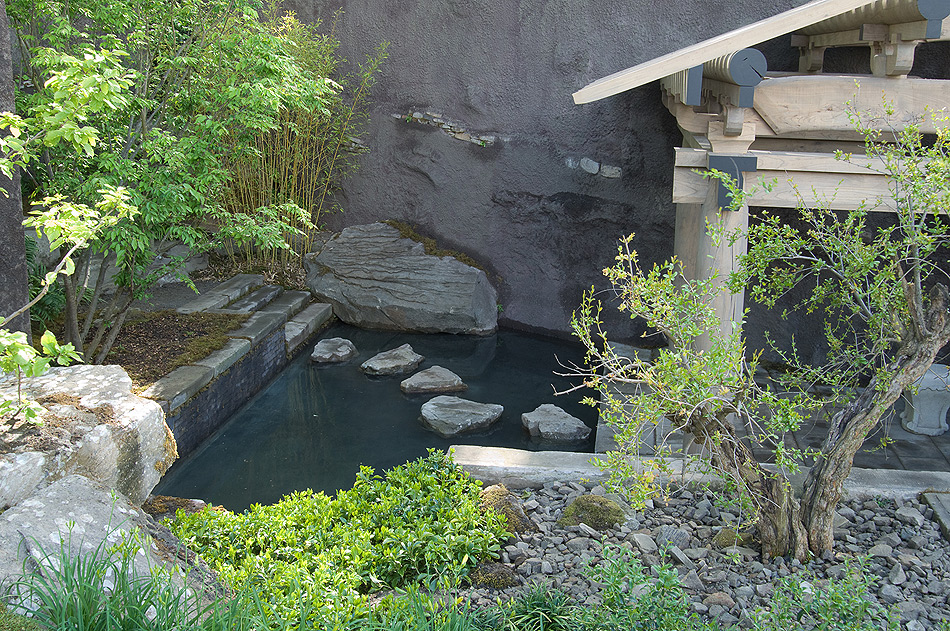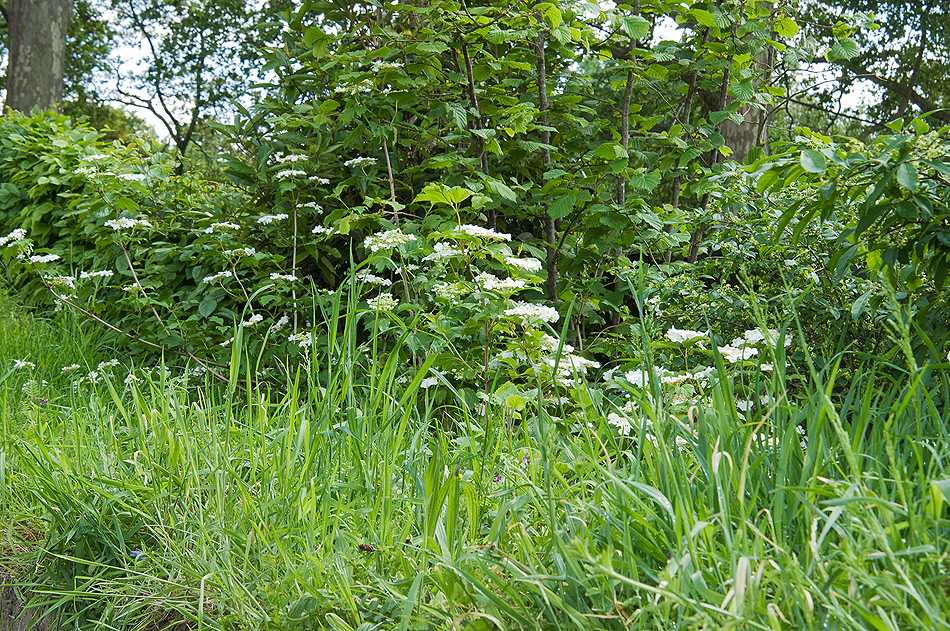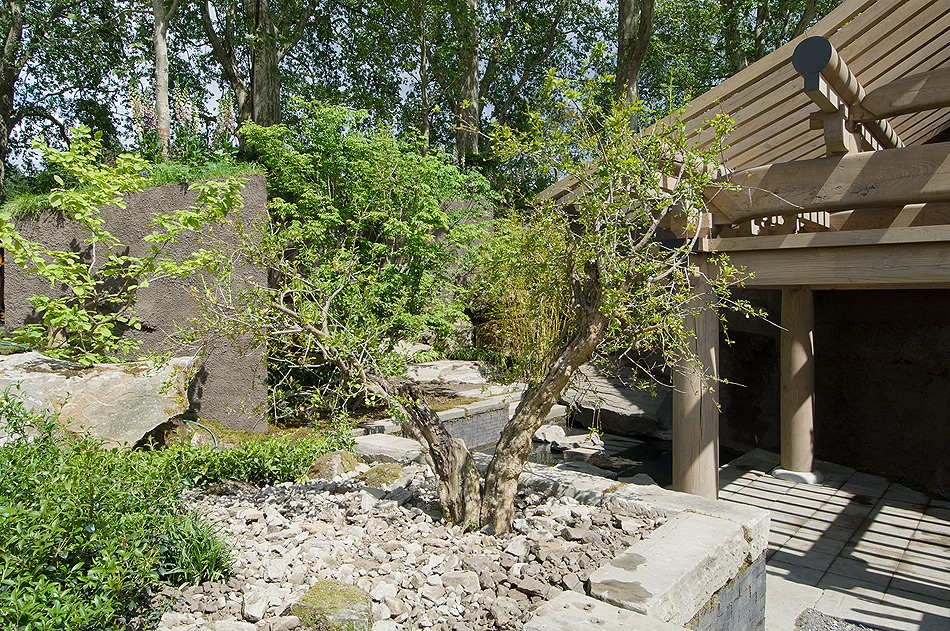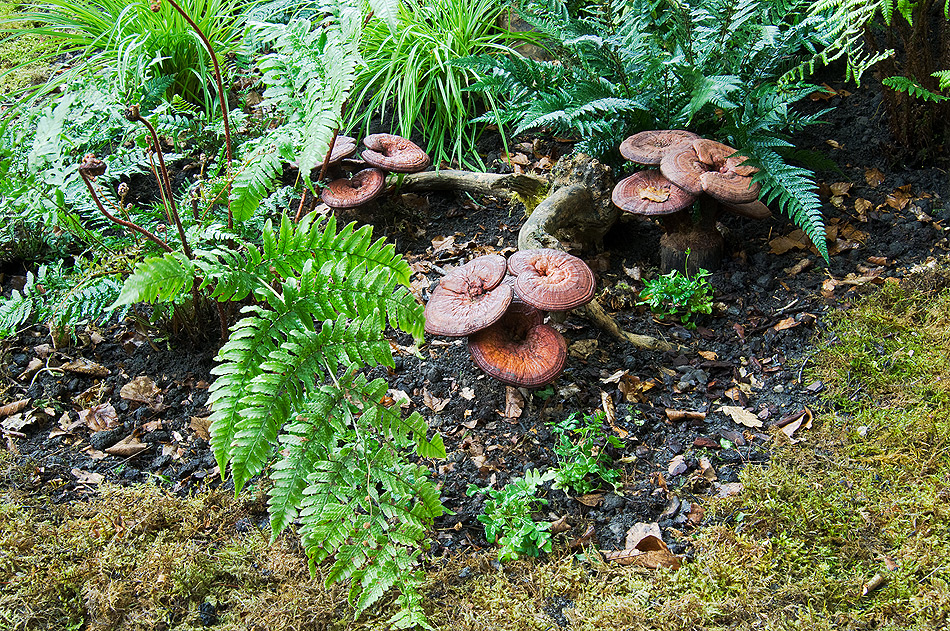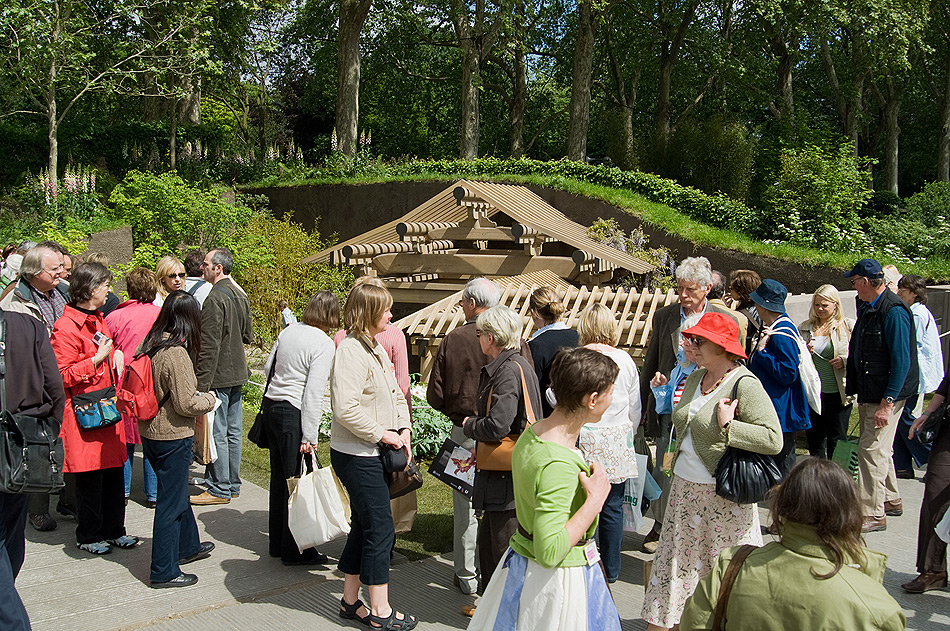Shao Fan’s eloquent transformation of the space at Chelsea resonates with the core aims of the KT Wong Foundation: projecting China’s rich, historically informed culture through the lens of modernity. The garden offers a platform for Western audiences to engage with Chinese culture.
In I Dream, I Seek My Garden, the resurgence of Chinese culture is represented by a scholar’s ‘lost’ garden partially unearthed from the London soil. The viewer is confronted with what appears to be an abandoned archaeological dig, in which the scholar’s garden sits among walls of earth, through which the roots of trees grow.
The illusion is completed with English trees and grass that can be seen in the distance. The rocks and sweeping walls of the landscape articulate the relationship between Chinese landscape painting, architecture and sculpture. The immaculate ‘preservation’ of the sunken Chinese garden introduces elements of the surreal, tools with which Fan negotiates the complex position of Chinese culture today.
With all eyes on China, Chinese culture is being resurrected and reborn. This rebirth finds its expression in the garden’s centrepiece, a magnificent pavilion handcrafted from elm beams reclaimed from Chinese villas and surrounded by indigenous Chinese plants.
At the same time, the pavilion can be seen as a symbol of a disappearing Chinese culture, one that is slowly sinking beneath the soil of a Western garden. In this context the traditional scholar’s garden, conceived as a retreat from worldly temptations, becomes a vehicle for the expression of deep concern. The plants, chosen for their medicinal properties and cultural symbolism, reflect the pure qualities of this retreat.
